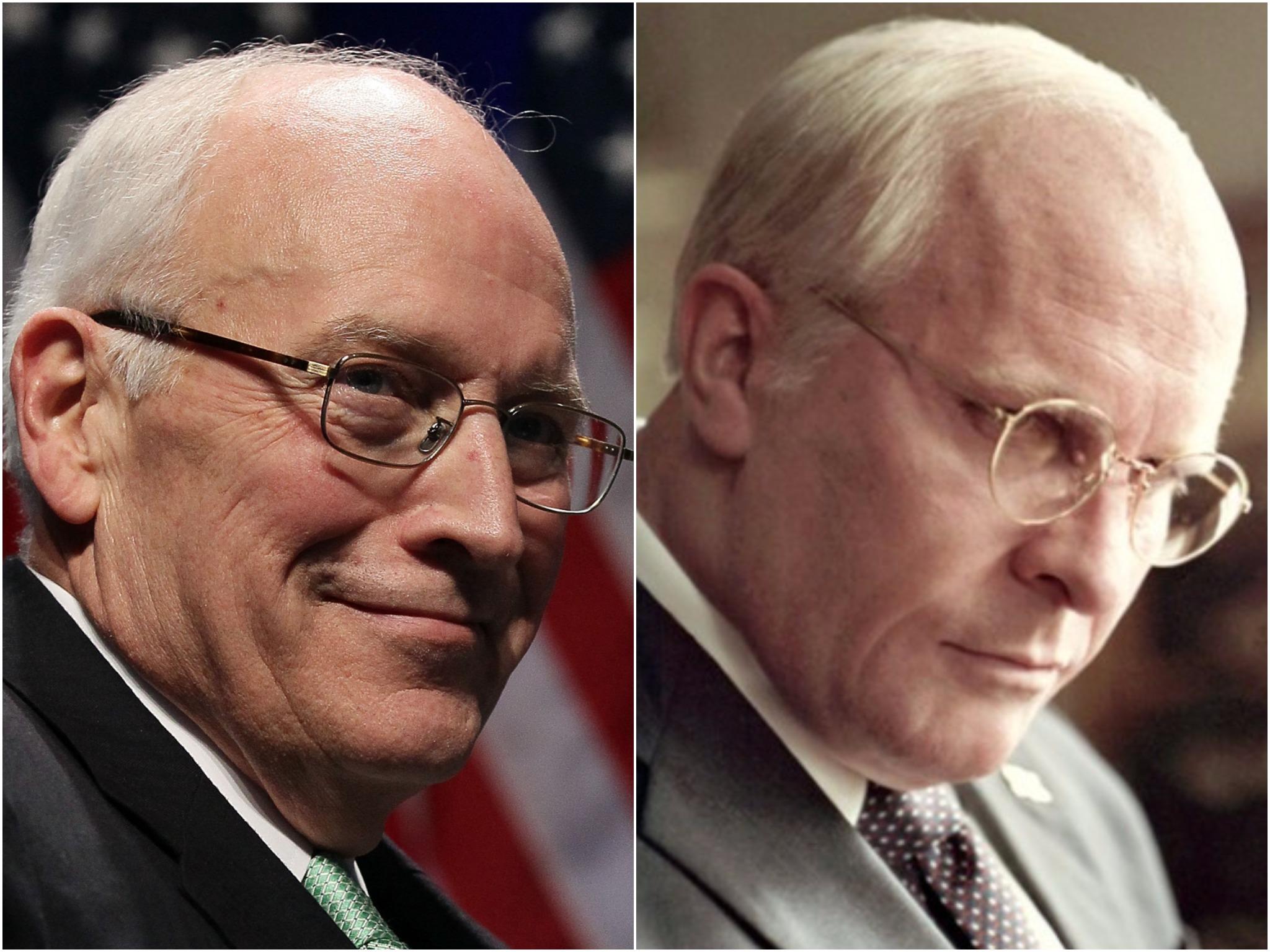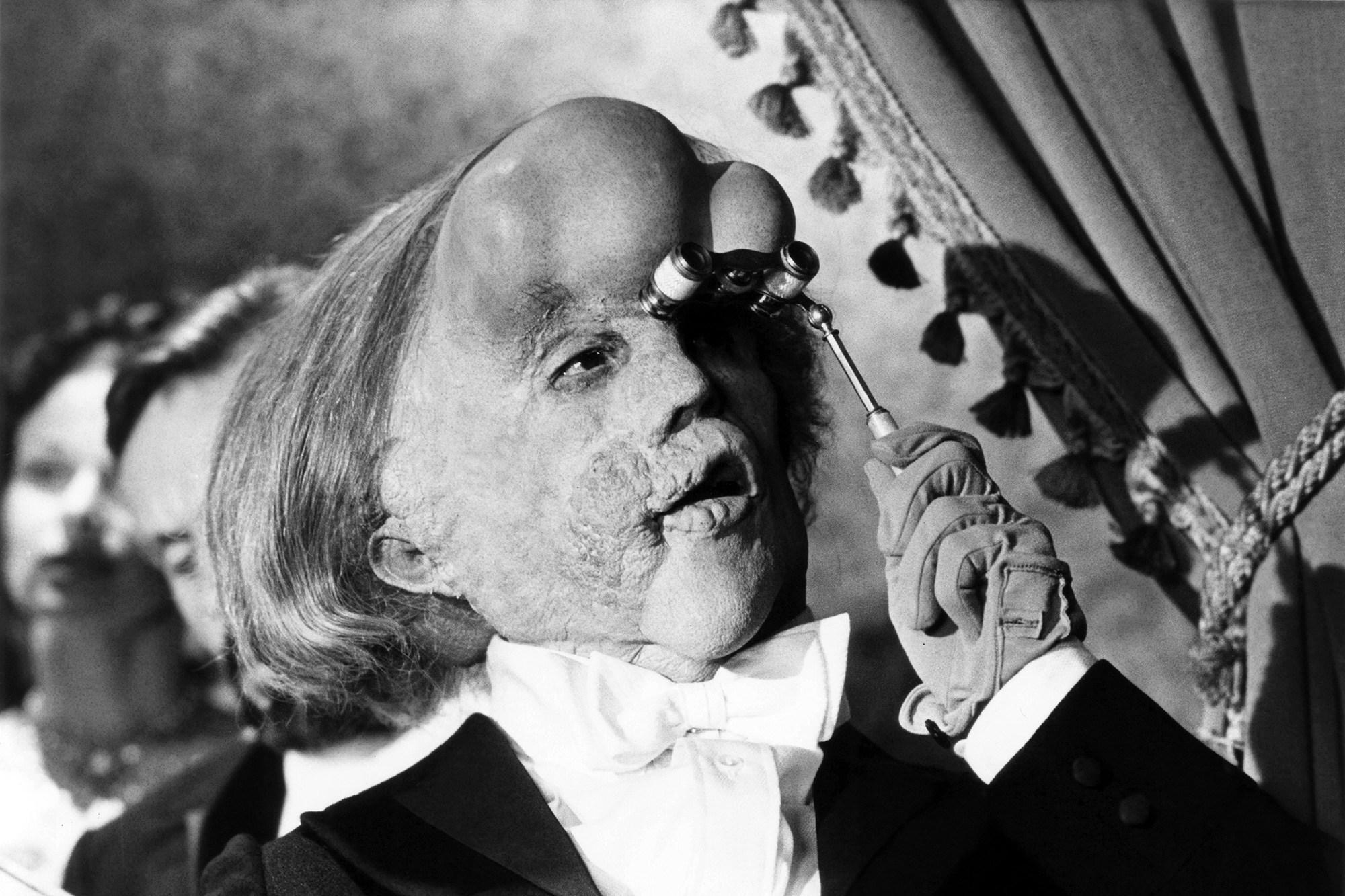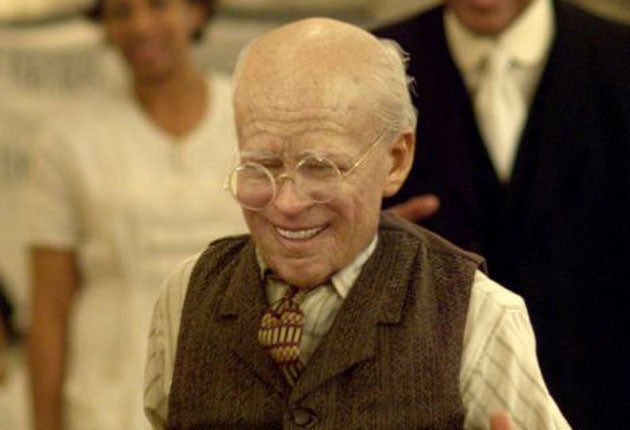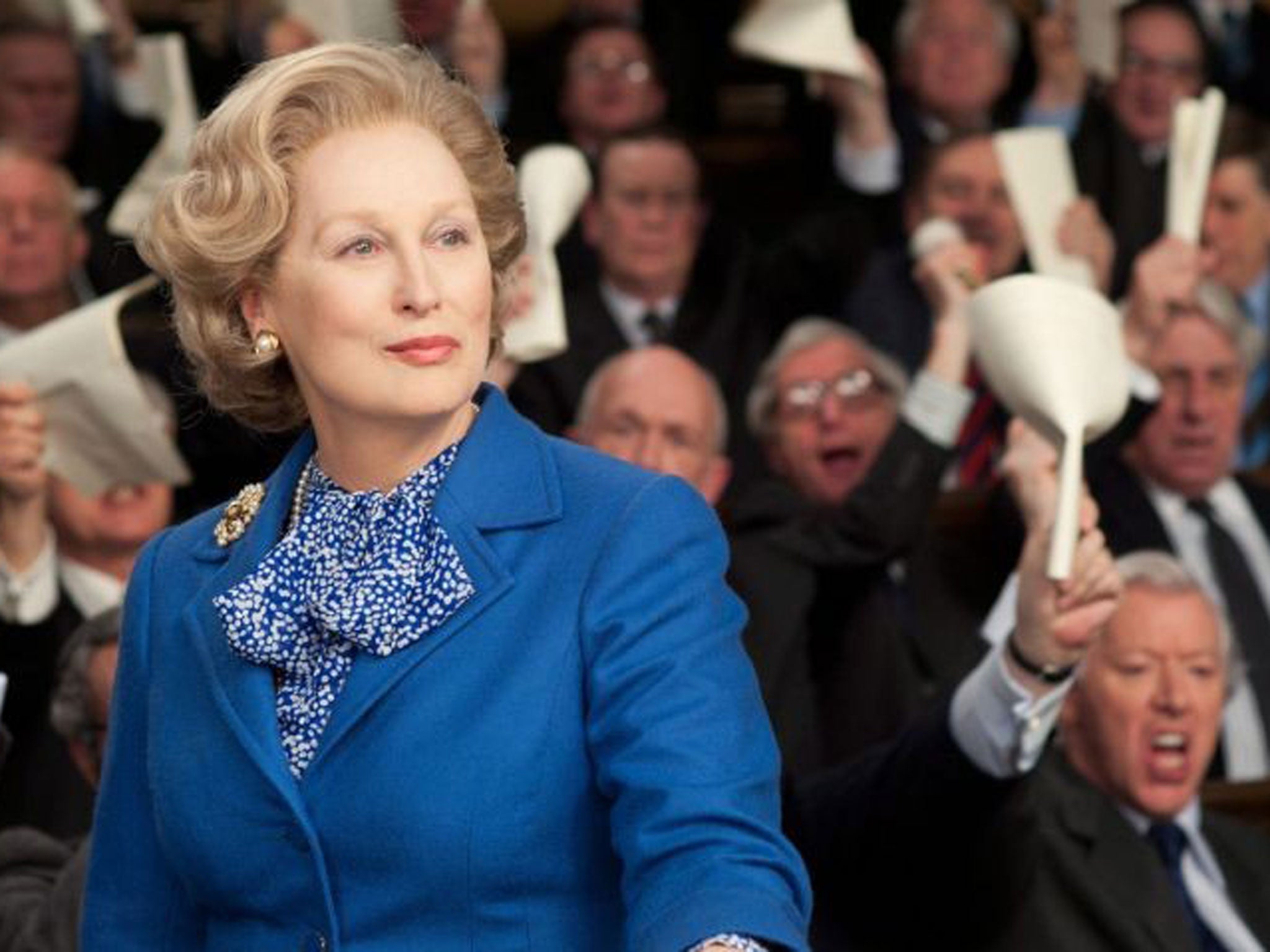How Christian Bale became Dick Cheney – and other big screen transformations
The prosthetics in ‘Vice’ turned the Welsh actor into a remarkable likeness of the former vice president. But such realism was a long time coming, finds Andrew R Chow

Your support helps us to tell the story
From reproductive rights to climate change to Big Tech, The Independent is on the ground when the story is developing. Whether it's investigating the financials of Elon Musk's pro-Trump PAC or producing our latest documentary, 'The A Word', which shines a light on the American women fighting for reproductive rights, we know how important it is to parse out the facts from the messaging.
At such a critical moment in US history, we need reporters on the ground. Your donation allows us to keep sending journalists to speak to both sides of the story.
The Independent is trusted by Americans across the entire political spectrum. And unlike many other quality news outlets, we choose not to lock Americans out of our reporting and analysis with paywalls. We believe quality journalism should be available to everyone, paid for by those who can afford it.
Your support makes all the difference.You’d be forgiven for not recognising Christian Bale in Vice, a new film in which he stars as Dick Cheney.
Long creases run from his nostrils to his jowls, which sink into a starched collar. His jaw takes on the shape of a baseball, and heavy forehead lines hover over a thick, furrowed brow.
Even an actor as committed as Bale – who gained 40 pounds for the role and routinely changes his weight for films – couldn’t pull off this metamorphosis alone. The filmmakers enlisted a team of Oscar-winning prosthetic and makeup artists, who created more than 100 pieces of encapsulated silicone to help Bale fully step into Cheney’s skin and to turn him into the former vice president at five different stages of his life.
Bale’s startling transformation is just the latest step forward in Hollywood for a booming prosthetics industry. For years, prosthetics were deep in the uncanny valley, making actors who wore them look not quite human, but recent advances in materials and expertise have allowed artists to create remarkable likenesses.
While they are now often used to achieve fleshy hyper-realism, the initial purpose of prosthetics was the exact opposite.
“For many decades it was just monsters and creatures,” says Brian Wade, an artist who sculpted facial pieces for Vice. He grew up admiring classic beasts like the 1931 Frankenstein – which used crude makeshift materials like cotton and spirit gum to transform Boris Karloff into the wretched creature – and the primates in the 1968 Planet of the Apes, which were a breakthrough for the field. Aiming for a higher quality than masks allowed, makeup artist John Chambers developed a new type of foam rubber and created facial appliances that allowed actors to talk and emote.
But while Chambers’ apes were revolutionary at the time, they look cartoonish by today’s standards. And despite his best efforts and those of other pioneers like Dick Smith (The Godfather) and Rick Baker (Star Wars), the makeup artistry of that era remained held back by a minimal knowledge base, paltry budgets and low expectations.

“We were still doing everything by hand,” makeup artist Ve Neill recalls. She says that when a set of prosthetic Klingon heads was mistakenly ruined in Star Trek: The Motion Picture (1979), filmmakers opted not to redo them but rather to obscure the characters with a smoke machine. “It was really smoky, so nobody could tell they were all messed up,” Neill says, laughing.
In the 1980 film The Elephant Man, director David Lynch initially treated prosthetics so cavalierly that he planned to create the title character’s severely deformed face himself. Only after Lynch hit a dead end did he enlist Christopher Tucker, an autodidact who honed his craft by reading chemistry books about foam latex and testing out concoctions in his mother’s oven in England. (“She was not very pleased – it’s quite smelly,” he says.)
Given just five weeks to design and sculpt an enormous and grotesque head for actor John Hurt, Tucker forged a double-layered foam latex design, which enlarged Hurt’s facial contours, then overlaid the Elephant Man’s face on top. The practical application was grueling: Hurt had to arrive on set at 4 am and sit in the makeup chair for eight hours as the prosthetic was applied. After shooting, he had to wait an additional two hours while it was removed. “It was a real marathon,” Tucker says.
The long hours paid off when, after a protest campaign, the Academy of Motion Picture Arts and Sciences established a permanent makeup and hairstyle Oscars category the following year. (By that point, however, The Elephant Man was no longer eligible.)
With the potential for glory, artists designed many striking and groundbreaking prosthetic-driven characters over the next decade, from Beetlejuice – which earned Neill an Oscar – to The Terminator and The Fly.
But realism was still a long way off, in large part because of the limitations of foam latex, the industry’s preferred prosthetic material. Latex looked rubbery; it changed in texture depending on temperature or other chemicals in the air.
“It was horrible,” says Greg Cannom, prosthetics and makeup effects designer on Vice. “Necks would wrinkle and buckle. If an actor smiled, they would get weird lines around the mouth and eyes.“

In the Nineties, leading prosthetic artists started covertly experimenting with silicone, spending months mixing materials in their own labs and refusing to reveal their secrets to each other. Kazuhiro Tsuji developed one silicone method to apply a humanlike skin to disguised alien Edgar on Men in Black, while Cannom developed another for the android-centric Bicentennial Man. (The Oscars would give a technical achievement award to Cannom for his silicone development in 2005.)
“It moved naturally, like no other material we had before,” Tsuji said of silicone. “It had a translucency. It was quite skinlike.”
The competition spurred swift progress and a new generation of movies that leaned heavily on face transformation, from The Curious Case of Benjamin Button to The Iron Lady. A prosthetics transfer system, invented by Christien Tinsley for The Passion of the Christ from 2004, allowed a quick and realistic way to cover a body with wounds, burns or tattoos. A makeup job that would have taken a full work day could now be applied in two hours.

As makeup improved, so did computer-generated imagery, which some artists viewed as a threat. Characters who might have previously been created with prosthetics, like tentacled Davy Jones in the Pirates of the Caribbean series, were now created digitally.
But CGI also allowed filmmakers to erase small mistakes around the edges of silicone pieces, taking away the burden of perfection. “It’s still your makeup, but they’re just fixing this little edge problem,” Cannom says. “I am so happy for that now.”
Cannom says no digital touch-ups were necessary for Vice. He and the rest of the team worked carefully to create the prosthetics: first, they pored over photos and videos of Cheney, paying particular attention to his most prominent features, like the silhouette of his nose and the dimple on his chin.
After creating designs for five different decades of Cheney’s life, the team began a regimented process that operated “like a beautifully orchestrated and creative assembly line”, Wade says. A three-dimensional mould identical to Bale’s head was created; an artist then sculpted models of the prosthetic pieces in clay. The clay pieces were used to make a syntactic dough and epoxy mold, which in turn were used to create the silicone pieces. Those were then applied to Bale on set, with the most complex jobs taking up to four hours.
The goal was to both create a likeness and to allow Bale to be expressive. “There was an understanding that it would be an amalgam of Christian Bale and Dick Cheney, without covering his entire face,” Wade says. “The most successful makeups aren’t the ones where you’re trying to completely hide the actor.”
And Cannom says that Bale himself was pivotal in shaping the final design. When he suggested that his neck be thicker, Cannom was skeptical but heeded the request and constructed new pieces.
Cannom described the day that Bale arrived on set as Cheney. “He put on the suit, walked into the office with all of us and everybody just died,” he says with a laugh. “I was shocked. He looked just like him.”
© 2019 The New York Times
Join our commenting forum
Join thought-provoking conversations, follow other Independent readers and see their replies
Comments